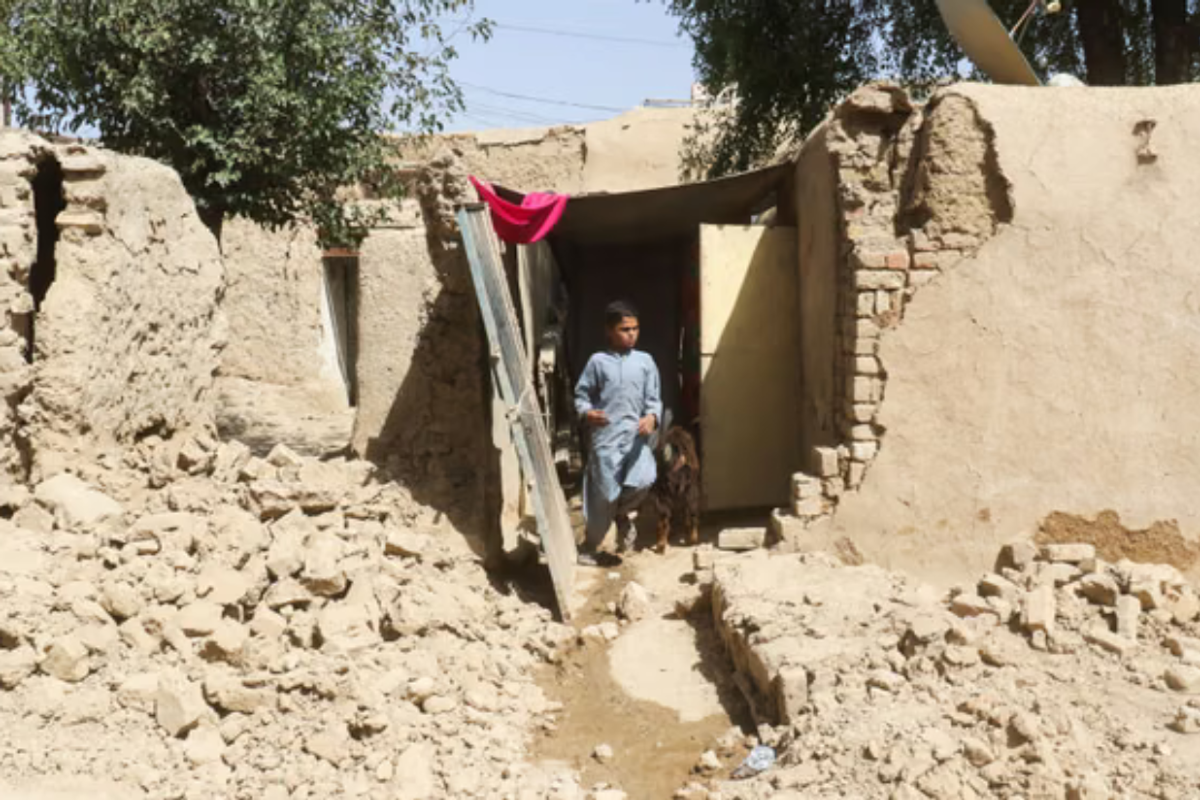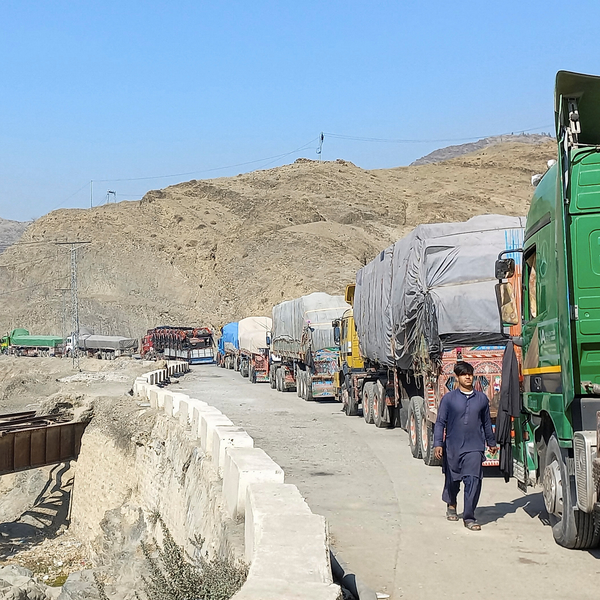17 of Pakistan’s 20 most vulnerable districts located in Balochistan, report finds
Nationwide assessment shows severe gaps in housing, health, education and livelihoods, while Punjab dominates list of least-vulnerable areas
Business Desk
The Business Desk tracks economic trends, market movements, and business developments, offering analysis of both local and global financial news.

A boy walks out of his damaged family house, following an earthquake, in Harnai, Balochistan, Pakistan in 2021
Reuters
A new nationwide assessment has found that Pakistan’s poorest and most underserved communities are overwhelmingly concentrated in Balochistan, where 17 of the country’s 20 most vulnerable districts are located, according to a report released Monday by the Pakistan Population Council and funded by the United Kingdom.
The report — the District Vulnerability Index for Pakistan (DVIP) — was launched by Finance Minister Muhammad Aurangzeb and Climate Change Minister Musadaq Malik. It reveals stark disparities across provinces, showing that Punjab dominates the list of the country’s 20 least vulnerable districts, with 13 districts ranked in the best-performing category. Balochistan, by contrast, has not a single district in the least-vulnerable group.
The findings highlight what officials described as an “eye-opening” imbalance in resource distribution and development outcomes.
The report is based on six categories: housing, communication, transport, livelihoods, access to health services, access to education and demographic pressures.
Balochistan dominates list of most deprived districts
According to the report, the 20 most vulnerable districts include Washuk, Khuzdar, Kohlu, Zhob, Musakhel, Dera Bugti, Killa Saifullah, Kalat, Sherani, Awaran, Jhal Magsi, Nasirabad, Chagai, Barkhan, Kharan, Harnai, Panjgur, and Mashkhel in Balochistan.
Two districts in Khyber Pakhtunkhwa — Kohistan and North Waziristan — also fall in the most-vulnerable category, along with Tharparkar in Sindh.
The report indicates that many of these districts lack even the most basic amenities. In Jhal Magsi, 97% of households live in mud or semi-permanent structures, and in several areas up to 75% of homes consist of only one room.
Across the 20 most vulnerable districts, 65% of houses are mud or temporary structures, half lack toilet facilities and 40% have no access to clean drinking water.
Severe service gaps
The study finds that more than 10 million people — roughly 11.3% of Pakistan’s population — live in these 20 most vulnerable districts. The group includes 2 million women of reproductive age and 2 million children under 5, making them especially susceptible to health and nutrition risks.
In many parts of Balochistan, the report notes, communities suffer from an acute lack of roads, transportation and telephone services, slowing emergency response and blocking development work. In remote districts, the nearest healthcare facility may be more than 30 kilometers away.
Education access also reflects extreme disparities: Karachi has the highest density of primary and higher secondary schools, while Balochistan has the lowest. Girls in Balochistan face the longest travel distances to reach high or higher-secondary schools.
Unemployment and forced labor
Balochistan and Khyber Pakhtunkhwa have the highest unemployment rates in the country, along with the largest share of unpaid family labor.
According to the data, 15 of the 20 worst-ranked districts for employment are in Balochistan.
Population growth, climate stress and inequality
Pakistan’s population growth rate — 2.55%, the highest in the region — is straining social services, Chief Economist Imtiaz Ahmad said at the launch event.
Larger families, particularly in underserved districts, further limit access to education and healthcare.
Climate minister Malik said the report exposes “a deeply uncomfortable truth” about unequal access to basic services such as water, sanitation, housing and education.
Both Khyber Pakhtunkhwa and Balochistan face additional burdens from years of conflict and vulnerability to climate shocks including extreme temperatures, floods and drought.
Punjab leads in development indicators
The report shows strong contrasts across provinces. Among the 20 best-performing districts, 13 are in Punjab, four in Sindh, two in Khyber Pakhtunkhwa and none in Balochistan.
The five least-vulnerable districts nationwide are Karachi’s four urban districts followed by Lahore.
The findings raise questions about the use of funds allocated under the Seventh National Finance Commission, which significantly increased provincial revenues. The report notes that provinces are now “cash-rich” and parking surplus funds in federal debt rather than spending on local development.
Officials emphasized the need to transfer financial resources directly to districts to curb the growing concentration of vulnerable populations.
“This should be a wake-up call,” Aurangzeb said, warning that entrenched disparities in health, education and livelihoods may deepen without urgent reforms.










Comments
See what people are discussing